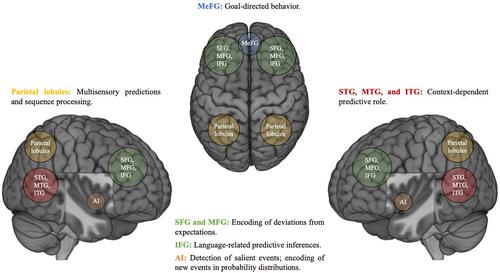Predictive processing (PP) stands as a predominant theoretical framework in neuroscience. While some efforts have been made to frame PP within a cognitive domain-general network perspective, suggesting the existence of a “prediction network,” these studies have primarily focused on specific cognitive domains or functions. The question of whether a domain-general predictive network that encompasses all well-established cognitive domains exists remains unanswered. The present meta-analysis aims to address this gap by testing the hypothesis that PP relies on a large-scale network spanning across cognitive domains, supporting PP as a unified account toward a more integrated approach to neuroscience. The Activation Likelihood Estimation meta-analytic approach was employed, along with Meta-Analytic Connectivity Mapping, conjunction analysis, and behavioral decoding techniques. The analyses focused on prediction incongruency and prediction congruency, two conditions likely reflective of core phenomena of PP. Additionally, the analysis focused on a prediction phenomena-independent dimension, regardless of prediction incongruency and congruency. These analyses were first applied to each cognitive domain considered (cognitive control, attention, motor, language, social cognition). Then, all cognitive domains were collapsed into a single, cross-domain dimension, encompassing a total of 252 experiments. Results pertaining to prediction incongruency rely on a defined network across cognitive domains, while prediction congruency results exhibited less overall activation and slightly more variability across cognitive domains. The converging patterns of activation across prediction phenomena and cognitive domains highlight the role of several brain hubs unfolding within an organized large-scale network (Dynamic Prediction Network), mainly encompassing bilateral insula, frontal gyri, claustrum, parietal lobules, and temporal gyri. Additionally, the crucial role played at a cross-domain, multimodal level by the anterior insula, as evidenced by the conjunction and Meta-Analytic Connectivity Mapping analyses, places it as the major hub of the Dynamic Prediction Network. Results support the hypothesis that PP relies on a domain-general, large-scale network within whose regions PP units are likely to operate, depending on the context and environmental demands. The wide array of regions within the Dynamic Prediction Network seamlessly integrate context- and stimulus-dependent predictive computations, thereby contributing to the adaptive updating of the brain's models of the inner and external world.



